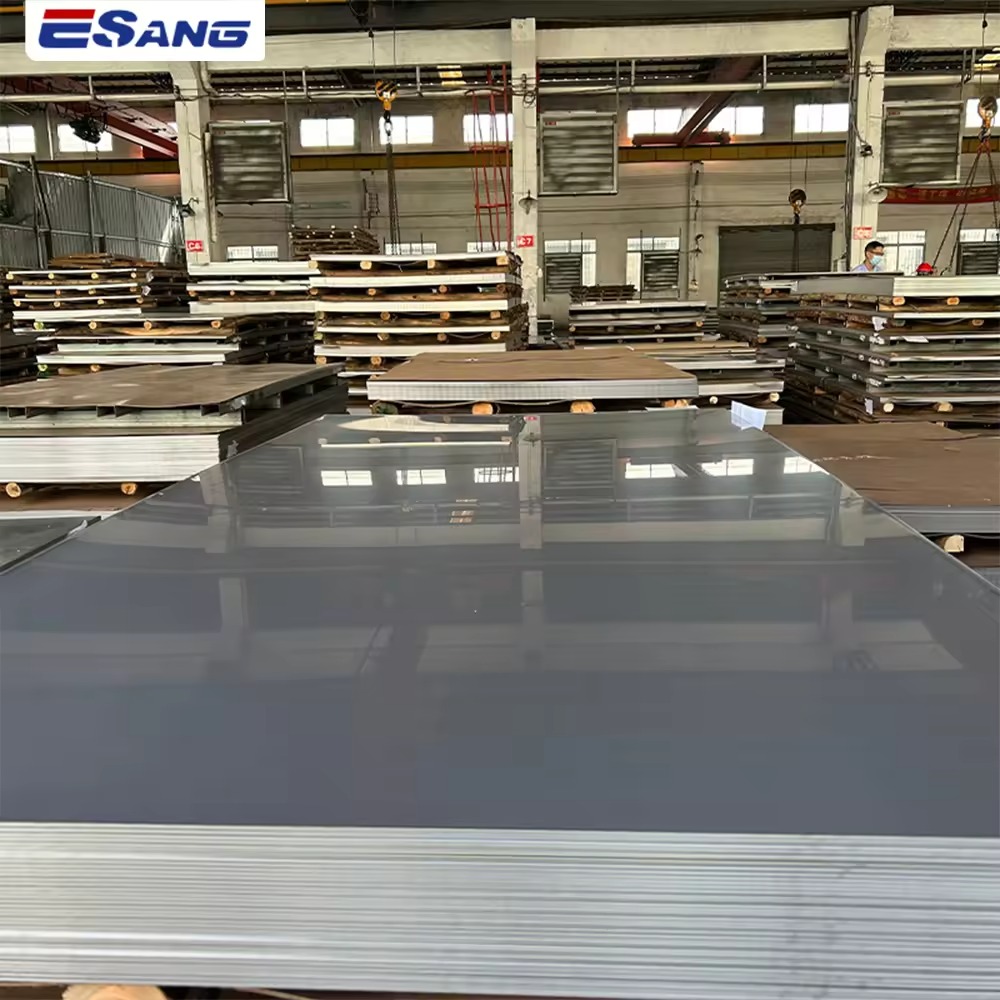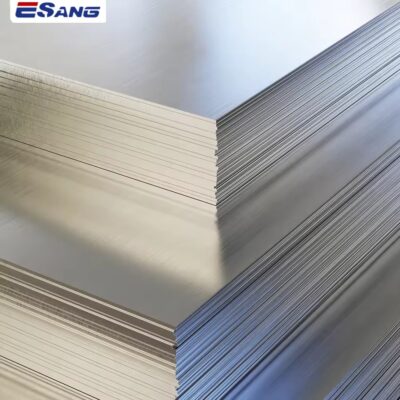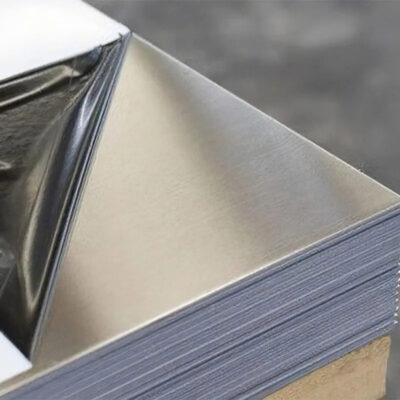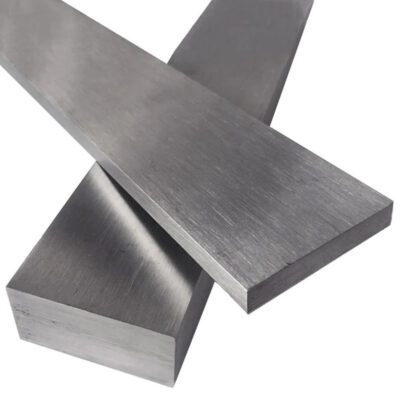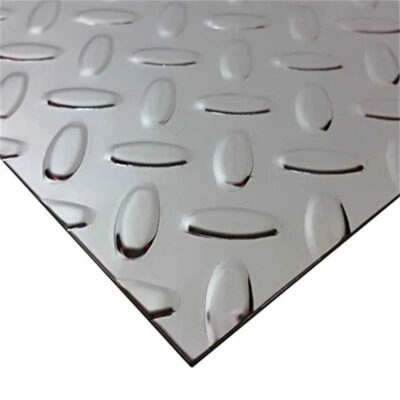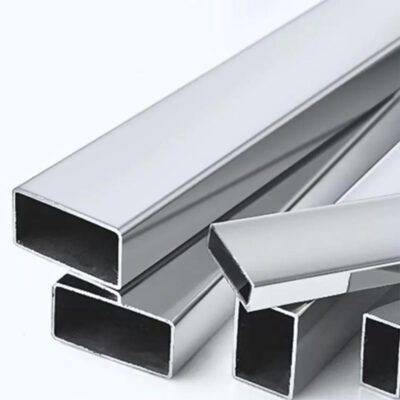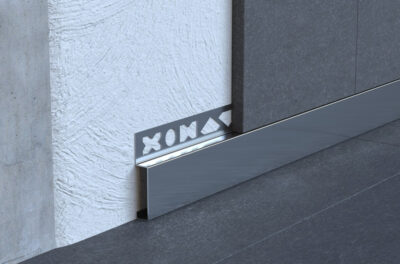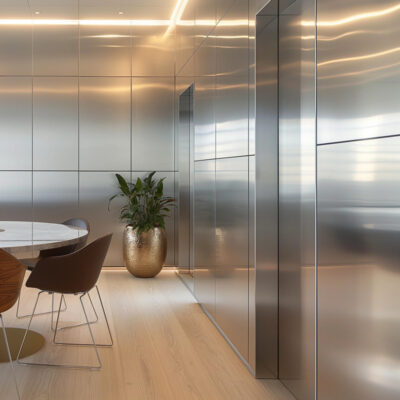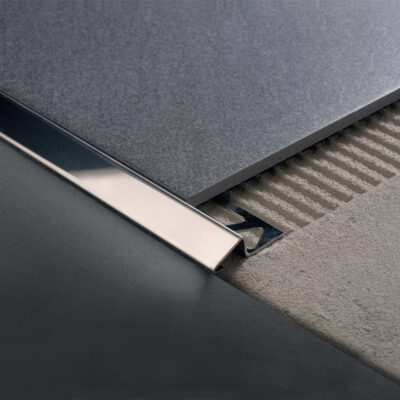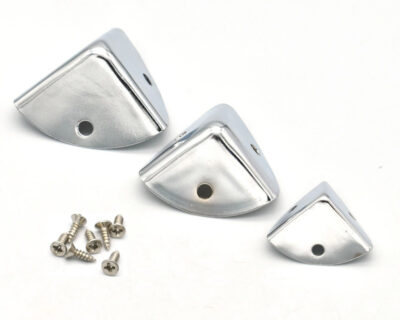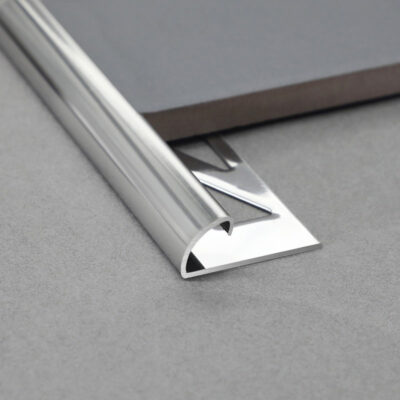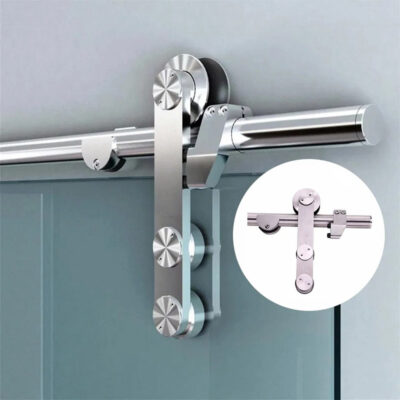Introduction to 304 Stainless Steel Sheets
The first time I encountered 304 stainless steel in action wasn’t in a gleaming kitchen or modern architectural facade, but rather during an industrial facility tour where the material’s resilience was being tested in remarkably harsh conditions. What struck me wasn’t just the material’s immaculate appearance despite constant exposure to corrosive elements, but the matter-of-fact way the facility engineer described it as “the backbone of their operation.” This perspective shifted my understanding of stainless steel from merely a premium aesthetic choice to an engineering essential.
304 stainless steel sheets represent one of the most widely used and versatile forms of austenitic stainless steel available today. Containing approximately 18-20% chromium and 8-10.5% nickel, this non-magnetic alloy offers an exceptional combination of formability, weldability, and corrosion resistance that makes it indispensable across countless industries. Its development traces back to the early 20th century when metallurgists were seeking materials that could withstand increasingly demanding industrial environments.
What distinguishes 304 from other stainless variants is its exceptional balance of properties. It’s not the most corrosion-resistant grade available (that would be the more expensive 316), nor is it the strongest or most heat-resistant. Instead, 304 stainless steel sheets occupy that sweet spot of performance, versatility, and cost that explains their prevalence in everything from kitchen equipment to chemical processing tanks.
The chromium content is particularly crucial—it forms a self-healing passive layer of chromium oxide on the surface when exposed to oxygen. This microscopic shield regenerates continuously when damaged, providing long-term protection without additional treatments. This characteristic alone helps explain why approximately 60% of all stainless steel produced globally is austenitic, with type 304 being the flagship grade within this category.
Composition and Properties of 304 Stainless Steel
The exceptional performance of 304 stainless steel sheets stems directly from their carefully balanced chemical composition. While looking through material data sheets for a recent project, I noticed how narrow the acceptable ranges are for each element—a testament to how precisely calibrated this alloy must be to maintain its characteristic properties.
The standard composition includes:
| Element | Percentage Range | Functional Contribution |
|---|---|---|
| Chromium | 18-20% | Forms passive oxide layer for corrosion resistance |
| Nickel | 8-10.5% | Stabilizes austenitic structure, enhances formability |
| Carbon | ≤0.08% | Strengthening agent (kept low to prevent carbide precipitation) |
| Manganese | ≤2% | Improves hot workability and helps maintain austenitic structure |
| Silicon | ≤1% | Improves oxidation resistance |
| Phosphorus | ≤0.045% | Residual element, strictly controlled |
| Sulfur | ≤0.03% | Residual element, strictly controlled |
| Nitrogen | ≤0.1% | Provides additional strength and corrosion resistance |
| Iron | Balance | Base metal |
This composition gives 304 stainless steel sheets their characteristic properties. The material maintains tensile strength of approximately 515 MPa (75,000 psi) and yield strength around 205 MPa (30,000 psi). What’s particularly impressive is how it maintains these mechanical properties across a wide temperature range.
During a consultation with Dr. Eliza Harrington, a metallurgical engineer specializing in stainless alloys, she emphasized that “the true value of 304 isn’t just its room temperature properties, but how predictably it performs from cryogenic temperatures up to about 870°C (1600°F).” This temperature stability explains its prevalence in everything from freezer panels to exhaust systems.
The physical properties further enhance its versatility:
- Density: 8.0 g/cm³
- Melting point: 1400-1450°C (2550-2650°F)
- Specific heat: 0.5 kJ/kg·K
- Thermal conductivity: 16.2 W/m·K
- Electrical resistivity: 72 μΩ·cm
When compared to other stainless grades, 304 stands out for its balance rather than extremes. Type 316 offers superior corrosion resistance but at higher cost. Type 430 provides good corrosion resistance at lower cost but sacrifices formability. Type 201 offers similar properties at lower cost by substituting manganese for some nickel, but with reduced corrosion resistance in certain environments.
The workability of 304 stainless steel sheets deserves special mention. The material can be readily formed, welded, and fabricated with conventional techniques, though it does work harden more rapidly than mild steel. This characteristic actually becomes advantageous in applications requiring enhanced strength after forming.
Manufacturing Process of 304 Stainless Steel Sheets
The journey from raw materials to finished 304 stainless steel sheets involves a fascinating sequence of precise metallurgical processes. Having toured a stainless steel production facility last year, I gained a newfound appreciation for the complexity behind these seemingly simple metal sheets.
The process begins with melting the raw materials—primarily iron, chromium, and nickel—in an electric arc furnace. Temperatures reach approximately 1650°C (3000°F), creating a molten mixture that undergoes a secondary refining process called Argon Oxygen Decarburization (AOD). This critical step removes excess carbon and adjusts the alloy composition to meet the exact specifications for 304 grade stainless steel.
The refined molten steel is then cast into semi-finished forms called slabs, typically 200mm thick. These massive slabs undergo a primary hot rolling process that reduces their thickness to around 25-30mm while stretching them to considerable lengths. The hot rolling occurs at temperatures exceeding 1100°C (2000°F), allowing the metal to remain malleable despite the significant deformation.
Next comes annealing—a heat treatment process that recrystallizes the grain structure, restoring ductility and removing internal stresses introduced during hot rolling. The steel is heated to approximately 1040-1120°C (1900-2050°F) and then rapidly cooled. During my facility tour, the production manager explained that “annealing is where the ‘personality’ of the steel is developed. Get this wrong, and all the subsequent processes can’t fix the fundamental properties.”
Following annealing, the steel undergoes pickling in acid baths to remove scale and surface oxides, revealing the characteristic silver-white appearance of stainless steel. Cold rolling further reduces the thickness to the final specifications, which can range from ultra-thin foil at 0.1mm to standard sheets at 1-4mm or heavier plates beyond that.
The final stages involve finishing treatments that define the surface characteristics. Common finishes include:
| Finish Designation | Description | Typical Applications |
|---|---|---|
| 2B | Smooth, reflective finish (most common) | General purpose applications, further polishing |
| #4 | Brushed finish with visible grain | Architectural, food equipment, visible surfaces |
| BA | Bright annealed – mirror-like finish | Decorative applications, reflectors |
| #8 | Mirror finish – highly reflective | High-end architectural, decorative elements |
| Embossed | Textured patterns | Flooring, anti-slip surfaces |
The manufacturing process includes rigorous quality control at each stage. X-ray fluorescence analyzers verify chemical composition, while mechanical testing confirms tensile strength, hardness, and elongation properties. Surface inspection systems detect even microscopic defects that could compromise performance.
The environmental impact of manufacturing 304 stainless steel sheets deserves mention. While energy-intensive, modern facilities have implemented significant improvements in efficiency. Moreover, E-Sang and other industry leaders have invested in technologies that recover and reuse process materials, reducing waste and environmental footprint significantly.
Applications and Industries
The remarkable versatility of 304 stainless steel sheets has enabled their integration into an extraordinary range of applications across diverse industries. What’s particularly interesting is observing how the same material can serve completely different functions depending on the context.
In the food and beverage industry, 304 stainless steel sheets have become virtually ubiquitous in commercial kitchens. Beyond the obvious advantages of hygiene and ease of cleaning, the material’s non-porous surface prevents bacterial growth, while its resistance to fruit acids, vinegar, and milk products makes it ideal for processing equipment. During a discussion with Laura Chen, a food safety consultant with 25 years of experience, she noted that “304 stainless isn’t just about durability in food environments—it’s about confidence. When fabricators specify this grade, they’re making a statement about food safety commitments.”
The architectural and construction sectors have embraced 304 stainless steel sheets for both practical and aesthetic reasons. The material’s corrosion resistance makes it suitable for exterior cladding even in coastal environments, while its natural luster and the availability of various finishes give architects significant design flexibility. Some notable examples include:
- The Walt Disney Concert Hall in Los Angeles, featuring brushed stainless steel panels
- The exterior of the Gateway Arch in St. Louis
- Cloud Gate (commonly known as “The Bean”) in Chicago’s Millennium Park
- Countless modern commercial buildings worldwide
In transportation applications, 304 stainless steel sheets provide critical corrosion resistance in automotive exhaust systems, bus and train body panels, and cargo tankers. The material’s ability to withstand road salts and environmental exposure significantly extends service life compared to conventional steels.
The medical and pharmaceutical industries rely heavily on 304 stainless for equipment, surgical tools, and cleanroom environments. The material’s ability to withstand repeated sterilization cycles without degradation, combined with its non-reactive surface, makes it ideal for these sensitive applications.
Perhaps less visible but equally important are industrial applications:
| Industry | Applications | Key Requirements Met by 304 Stainless |
|---|---|---|
| Chemical Processing | Storage tanks, mixing vessels, piping | Resistance to numerous chemicals, cleanability |
| Pulp and Paper | Digesters, bleach plants, tanks | Resistance to chlorides and process chemicals |
| Wastewater Treatment | Screens, tanks, structural components | Biofouling resistance, longevity in damp conditions |
| Energy | Heat exchangers, stacks, structural components | Temperature resistance, strength, corrosion resistance |
| Brewery/Winery | Fermentation tanks, transfer lines, kegs | Neutral flavor impact, cleanability, resistance to cleaning agents |
What I’ve found particularly interesting is the growing application of 304 stainless steel sheets in emerging sustainable technologies. Solar thermal collectors, biofuel processing equipment, and various components in hydrogen production facilities increasingly incorporate this material due to its longevity and recyclability.
A recent project I consulted on involved designing components for an anaerobic digestion system that converts food waste into biogas. The client initially considered less expensive materials but ultimately chose 304 stainless steel sheets for all wet-contact surfaces after calculating the total lifecycle costs. Three years into operation, this decision has proven sound—with zero corrosion issues despite the highly aggressive environment.
Advantages and Benefits
The enduring popularity of 304 stainless steel sheets stems from a compelling combination of advantages that few alternative materials can match. While working with various construction materials over the years, I’ve found that 304 stainless consistently delivers on its promises—a rarity in an industry where compromises are common.
Corrosion resistance stands as the foremost benefit. The chromium content forms a self-healing passive layer that protects against rust and corrosion in most environments. This property isn’t just about aesthetics—it translates directly into longer service life and reduced maintenance costs. During a marine construction project I observed, components made from 304 stainless retained their integrity after five years of saltwater exposure, while comparable carbon steel elements required replacement after just two seasons.
The mechanical properties of 304 stainless steel sheets offer an excellent balance of strength and ductility. With tensile strengths ranging from 515-620 MPa, these sheets provide substantial load-bearing capacity while remaining formable enough for complex fabrication. This combination allows designers to create structures that are simultaneously robust and sophisticated.
Temperature resistance represents another significant advantage. 304 stainless steel sheets maintain their properties from cryogenic temperatures up to approximately 870°C (1600°F). This exceptional range explains their prevalence in everything from freezer panels to heat exchangers. During a recent industrial kitchen renovation project, this characteristic allowed the same material to be used for both refrigeration units and cooking surfaces, creating visual continuity while meeting diverse functional requirements.
From a sustainability perspective, 304 stainless steel offers compelling benefits:
- Exceptional longevity (often 20+ years in demanding applications)
- 100% recyclability without degradation in properties
- High recycled content in new production (typically 60-80%)
- Minimal maintenance requirements reducing chemical use
- Zero VOC emissions during use
The hygiene advantages cannot be overstated. The non-porous, smooth surface is inherently resistant to bacterial growth and easily cleaned with standard detergents. This characteristic has made 304 stainless the default choice for healthcare equipment, food preparation surfaces, and pharmaceutical processing.
Aesthetic versatility deserves mention among the benefits. Available in finishes ranging from matte to mirror-like, 304 stainless steel sheets can complement virtually any design language. Unlike materials that require coatings for appearance or protection, the visual qualities of stainless are intrinsic to the material itself and won’t chip, peel, or require refinishing.
The fire resistance of 304 stainless steel sheets provides an additional safety advantage in many applications. With a melting point around 1400°C (2550°F), the material doesn’t contribute to fire load and maintains structural integrity far longer than many alternatives during fire events.
That said, no material is without limitations. The higher initial cost compared to carbon steel can present budget challenges, though this is typically offset by longer service life. The material’s weight (approximately 8.0 g/cm³) can be a consideration in applications where mass matters. Additionally, in environments containing high chloride concentrations, especially at elevated temperatures, 316 stainless may prove a better choice despite its higher cost.
Selection Criteria and Considerations
Choosing the right specifications for 304 stainless steel sheets involves navigating numerous variables beyond simply selecting the material grade. Having guided clients through this process numerous times, I’ve found that attention to these details often determines the ultimate success of a project.
Thickness selection represents the first critical decision. Standard 304 stainless steel sheets are available in gauges typically ranging from 7 gauge (4.76mm) to 30 gauge (0.31mm), with numerous options between. While it might seem prudent to choose thicker material for durability, this approach can unnecessarily increase costs and create fabrication challenges. A more nuanced approach considers:
- Structural requirements and expected loads
- Potential for deformation during service
- Vibration concerns (thicker isn’t always better for damping)
- Weight limitations
- Fabrication methods (thinner gauges may distort during welding)
Surface finish selection significantly impacts both aesthetics and performance. During a recent consultation for a hospital renovation, we initially specified a #4 brushed finish for wall panels, but later discovered that the directional grain would create cleaning challenges in that specific application. Switching to a 2B finish resolved the issue while maintaining the desired appearance.
| Finish Type | Appearance | Fingerprint Resistance | Typical Applications | Relative Cost |
|---|---|---|---|---|
| 2B (Standard) | Smooth, semi-reflective | Moderate | General purpose, to be further finished | Baseline |
| #4 (Brushed) | Unidirectional satin | Low | Visible architectural, kitchen equipment | +10-15% |
| #8 (Mirror) | High reflectivity | Very low | Decorative, high-end architectural | +30-40% |
| BA (Bright Annealed) | Smooth, reflective | Low | Reflective applications, decorative | +20-25% |
| Embossed | Textured patterns | High | Flooring, functional surfaces | +15-30% |
Sheet size considerations often get overlooked until fabrication begins. Standard dimensions typically include 4′ × 8′, 4′ × 10′, and 5′ × 10′ (1220mm × 2440mm, 1220mm × 3050mm, and 1524mm × 3050mm), though custom sizes are available. Optimizing layout to minimize waste can significantly impact project costs—I’ve seen material expenses reduced by up to 15% through careful nesting of components.
Edge condition is another important specification. Mill edge is standard, but custom edge treatments like rounded, deburred, or polished edges may be necessary for safety or aesthetic reasons. During a restaurant equipment installation, we discovered too late that specified sheets had sharp mill edges, requiring time-consuming field deburring that could have been avoided.
Protection films merit consideration for projects where surface appearance is critical. These temporary coverings prevent scratches during handling and fabrication but must be compatible with any subsequent processes like welding or forming. I once witnessed an entire batch of architectural panels rejected because residue from an incompatible protection film couldn’t be removed after installation.
Budget planning for 304 stainless steel sheets should account for:
- Base material costs (which fluctuate with nickel prices)
- Fabrication complexity (some finishes are more challenging to work with)
- Fastening systems (often specialized for stainless steel)
- Long-term maintenance savings compared to alternatives
For projects with extreme corrosion concerns, particularly involving:
- Saltwater exposure
- Swimming pool environments (chlorinated water)
- Chemical processing
- High temperature applications with corrosive elements
It’s worth considering whether the more expensive 316 grade might be necessary instead of 304. While 304 handles most environments admirably, these specific conditions may exceed its capabilities.
When working with 304 stainless steel sheets, specifying the correct certifications ensures you receive material that meets requirements. Common certifications include ASTM A240/A240M, ASME SA-240, and EN 10088-2, with material test reports (MTRs) providing verification of chemical composition and mechanical properties.
Installation and Maintenance
The long-term performance of 304 stainless steel sheets depends significantly on proper installation and maintenance practices. What many don’t realize is that despite the material’s inherent durability, adherence to certain principles during installation can dramatically extend service life and preserve appearance.
When fastening 304 stainless steel sheets, material compatibility deserves primary attention. Using dissimilar metals in direct contact can trigger galvanic corrosion—an electrochemical process that accelerates deterioration. I learned this lesson early in my career when a project using carbon steel fasteners with stainless panels showed visible rust streaking after just one rainy season. Always specify stainless steel fasteners (preferably also 304 grade) when working with 304 sheets.
Cutting and fabrication techniques significantly impact both appearance and performance:
- Laser cutting provides precision and minimal heat-affected zones
- Plasma cutting offers good speed but wider heat-affected areas
- Waterjet cutting eliminates thermal effects entirely
- Shearing works well for straight cuts on thinner gauges
- Sawing requires proper lubrication and blade selection
After any cutting operation, proper deburring and passivation are essential. Passivation—a chemical process that removes free iron from the surface and enhances the chromium oxide layer—should be performed after fabrication work that disrupts the factory finish. This step, though sometimes overlooked to save time or cost, dramatically improves corrosion resistance.
Welding 304 stainless steel sheets requires specific techniques to prevent sensitization (chromium carbide precipitation) that can compromise corrosion resistance. Low heat input, proper filler materials (typically 308L), thorough cleaning before welding, and post-weld cleaning all contribute to successful outcomes. During a complex architectural installation involving curved stainless elements, our team used specialized jigging and sequenced tack welds to minimize distortion—a common challenge with stainless steel.
For cleaning and maintenance, simplicity prevails. Despite marketing claims about specialized stainless steel cleaners, my experience suggests that warm water with mild detergent works perfectly for routine cleaning. For more stubborn stains, a mixture of water and white vinegar (10:1) is remarkably effective. When working on a heritage building restoration that had decades of accumulated grime on original stainless elements, we found that gentle, non-abrasive cleansers outperformed harsher alternatives that risked scratching the material.
Some maintenance guidelines that preserve 304 stainless steel’s appearance and performance:
- Always clean in the direction of the grain on finishes with visible texture
- Avoid chlorine-based cleaners, which can damage the passive layer
- Remove any iron particles promptly (they appear as brown spots and initiate corrosion)
- Periodically clean even seemingly clean surfaces to remove invisible contaminants
- In coastal environments, rinse with fresh water more frequently to remove salt deposits
Addressing common issues with 304 stainless steel sheets typically involves straightforward remediation:
- Tea staining (superficial brown discoloration): Usually removable with mild acid cleaners
- Scratches: Can often be blended with appropriate abrasive pads matched to the original finish
- Water spots: Typically cleaned with vinegar solution and prevented by proper drying
- Fingerprints: Minimized by selecting appropriate finishes initially, cleaned with microfiber cloths
In architectural applications, periodic inspection of drainage paths, mounting systems, and areas where water might collect can prevent issues before they develop. During a follow-up assessment five years after a major stainless steel facade installation, we discovered that slightly adjusting some panel edges to improve water shedding eliminated minor discoloration that had begun to appear.
Future Trends and Innovations
The landscape for 304 stainless steel sheets continues to evolve through technological advances and shifting market demands. Having tracked these developments over the past decade, I’m particularly intrigued by several emerging trends that promise to expand applications while addressing historical limitations.
Advanced surface modifications represent one of the most promising innovation areas. Conventional wisdom has always held that 304 stainless steel can’t match the hardness of tool steels or the non-stick properties of coated materials. However, processes like plasma nitriding and nitrocarburizing are creating “super stainless” surfaces with dramatically improved hardness and wear resistance without compromising corrosion performance. During a recent manufacturing technology exhibition, I examined samples treated with these processes that showed remarkable scratch resistance while maintaining the material’s core properties.
Nanotechnology applications are similarly transforming performance capabilities. Researchers at several major universities have developed nanoscale surface treatments that render 304 stainless steel sheets hydrophobic (water-repelling) or even omniphobic (repelling both water and oils). These modifications dramatically reduce maintenance requirements while enhancing hygiene in critical applications. A hospital equipment manufacturer I consulted with is currently testing these surfaces for medical equipment with promising preliminary results showing reduced biofilm formation.
In manufacturing processes, precision rolling technology continues to advance, enabling the production of ultra-thin gauge stainless steel sheets with exceptional flatness and surface quality. These developments are particularly relevant for electronics, aerospace, and medical device applications where miniaturization drives material requirements.
Sustainability considerations are increasingly influencing both production methods and applications. The stainless steel industry has made significant strides in reducing environmental impact:
- Electric arc furnaces increasingly powered by renewable energy
- Water recycling systems reducing consumption by up to 95%
- Advanced sorting technology improving recycled content percentages
- Reduced transportation emissions through distributed manufacturing
Market analyst Hiroshi Takahashi from the Global Metals Institute recently noted that “the carbon footprint of stainless steel production has decreased approximately 30% over the past 15 years, with further significant reductions expected as producers adopt hydrogen-based processing.” This trend enhances 304 stainless steel’s already strong sustainability profile and positions it well against competing materials as carbon regulation increases globally.
From an application perspective, the integration of 304 stainless steel sheets with other materials through advanced bonding technologies is opening new design possibilities. Composite panels combining stainless steel with lightweight cores offer exceptional stiffness-to-weight ratios for transportation and architecture. A fascinating aerospace project I recently reviewed utilized 304 stainless steel sheet laminated to carbon fiber reinforced polymer, creating components with the corrosion resistance and fire safety of stainless combined with the weight advantages of composites.
Digital manufacturing technologies are simultaneously transforming how 304 stainless steel sheets are processed. Advanced laser forming techniques now enable complex three-dimensional shapes without traditional tooling costs. Computational fluid dynamics simulations optimize flow surfaces for hygienic design. These capabilities are particularly valuable for custom applications and specialized equipment where traditional mass production economics previously limited material choices.
The emergence of antimicrobial stainless steel variants represents another notable development. While standard 304 stainless steel is already more hygienic than many alternatives, new copper-alloyed variants demonstrate active microbial reduction properties. Research indicates these materials can reduce bacterial populations by over 99% within two hours of exposure. Though currently commanding a premium price, these specialized sheets are finding applications in healthcare environments and public spaces where infection control is paramount.
Looking toward the future, ongoing research into tailoring grain structure at the microscopic level promises stainless steel sheets with enhanced formability, improved strength, and even better corrosion resistance than today’s standard 304 grade. As Professor Elena Ramirez, metallurgical researcher, explained during a recent industry conference, “We’re only beginning to unlock the full potential of these materials through precise microstructure control.”
Conclusion
Throughout this exploration of 304 stainless steel sheets, we’ve examined how this remarkable material continues to maintain its position as an indispensable component across diverse industries. From its carefully balanced composition to its versatile performance characteristics, 304 stainless steel represents an engineering triumph that successfully balances competing demands.
What I find most compelling about 304 stainless steel sheets isn’t any single property, but rather how they embody thoughtful compromise—offering excellent corrosion resistance without the premium price of higher alloys, good strength without excessive weight, and impressive durability without specialized maintenance requirements. This balance explains why, despite newer and more exotic materials entering the market, 304 stainless steel remains the benchmark against which alternatives are measured.
The material’s limitations need acknowledgment—it’s neither the least expensive option nor the most corrosion-resistant in extreme environments. Its weight can be prohibitive in transportation applications where every gram matters. Yet these constraints rarely outweigh its comprehensive advantages for most applications.
When selecting materials for critical applications, the extensive track record of 304 stainless steel sheets provides a level of confidence that newer alternatives simply cannot match. The material’s behavior is thoroughly documented across decades of real-world use in virtually every environment imaginable. This predictability has tremendous value in risk-averse industries where failures can have serious consequences.
The sustainability profile of 304 stainless steel sheets deserves particular emphasis in our increasingly resource-conscious world. The combination of longevity, recyclability, and reduced maintenance requirements creates a compelling total lifecycle assessment that often outperforms seemingly “greener” alternatives when all factors are considered.
For designers, fabricators, and engineers navigating material selections, 304 stainless steel sheets offer a proven solution that balances initial cost with long-term performance. By understanding the material’s capabilities and limitations—and following proper specification, installation, and maintenance practices—the full potential of this versatile material can be realized.
As we look toward future developments, ongoing innovations in production technology and surface engineering promise to address some of the traditional limitations while expanding applications into new territories. The core characteristics that have made 304 stainless steel sheets so ubiquitous will likely ensure their continued relevance even as material science advances.
Rather than viewing 304 stainless steel as merely a commodity material, I’ve come to appreciate it as an enabling technology—one that solves complex problems through elegant metallurgical balance. Whether in the dramatic curves of iconic architecture or the unassuming components of essential infrastructure, these remarkable sheets will continue their quiet but crucial role in our built environment for decades to come.
Frequently Asked Questions about 304 Stainless Steel Sheets
Q: What are 304 Stainless Steel Sheets, and what makes them versatile?
A: 304 Stainless Steel Sheets are known for their versatility due to their excellent corrosion resistance, high strength, and durability. They contain 18% chromium and 8% nickel, which confer non-magnetic properties and enhance their resistance to oxidation and corrosion. This composition makes them ideal for a wide range of applications across industries such as food processing, medical equipment, and architectural designs.
Q: What are the primary applications of 304 Stainless Steel Sheets?
A: 304 Stainless Steel Sheets are used in various industries:
- Medical Industry: For operating rooms, surgical tools, and medical equipment due to their non-toxic and corrosion-resistant properties.
- Food and Beverage: In kitchen equipment, storage tanks, and food processing machinery.
- Architectural Industry: In structural components, facade cladding, and outdoor furniture.
- Petrochemical Industry: For chemical storage tanks and piping systems.
Q: What are the key properties of 304 Stainless Steel Sheets?
A: The key properties include:
- Corrosion Resistance: High resistance to corrosion due to chromium and nickel content.
- Formability and Weldability: Easy to fabricate and weld without post-weld annealing.
- Durability: Long lifespan with low maintenance requirements.
- High-Temperature Resistance: Suitable for use up to 870°C (1600°F).
Q: Why are 304 Stainless Steel Sheets preferred for use in the food and pharmaceutical industries?
A: 304 Stainless Steel Sheets are preferred because they are non-reactive with most organic acids, making them “food-grade” stainless steel. They provide high corrosion resistance and are easy to clean and maintain, which is crucial for maintaining hygiene standards in food processing and pharmaceutical manufacturing.
Q: Are 304 Stainless Steel Sheets magnetic?
A: 304 Stainless Steel Sheets are generally not magnetic because they are austenitic stainless steels. However, they can become slightly magnetic under certain conditions, such as cold working, but this is not typically the case for standard applications.

